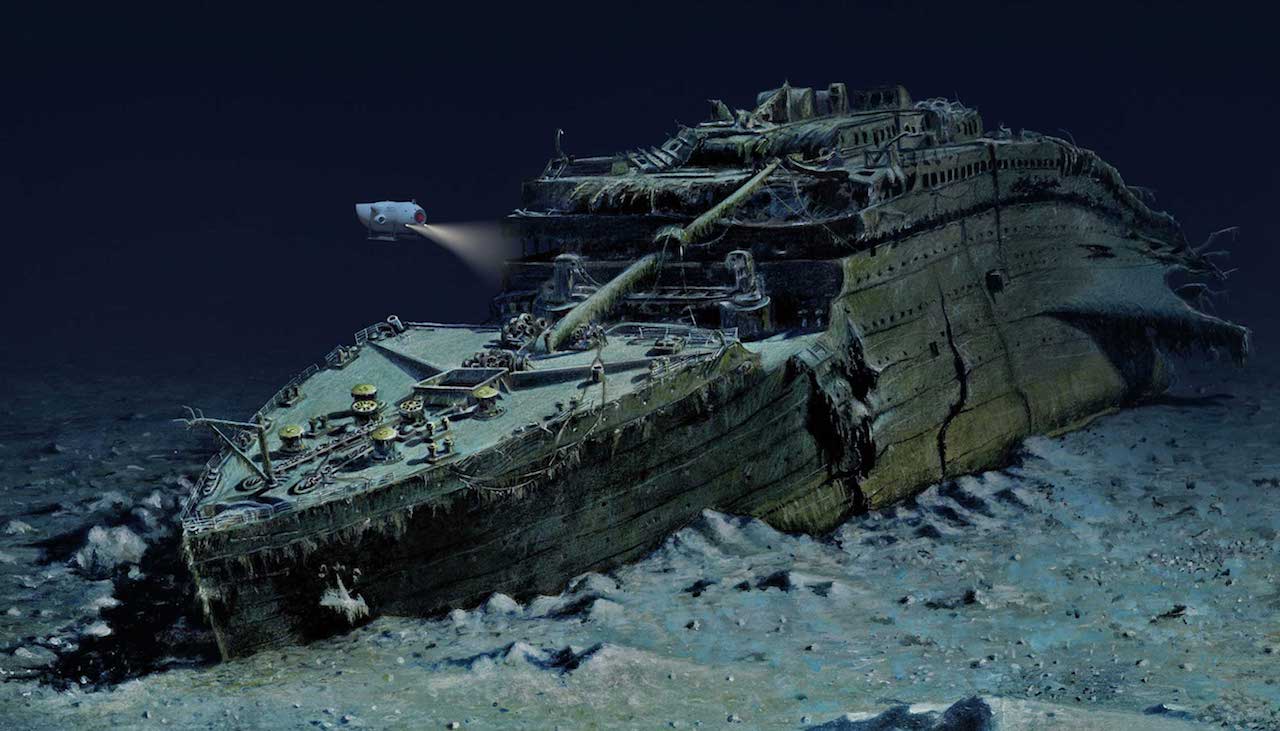
The most famous shipwreck will soon be digitally captured in 3D.
When I grew up RMS Titanic was quite literally a mystery. No one knew precisely what happened, nor where the great ship rested, aside from a vague zone southeast of Newfoundland.
https://en.wikipedia.org/wiki/RMS_Titanic
That all changed when an expedition in 1985 managed to locate the remains of the vessel by encountering debris and following the trail to the main sections.
Since then the site has apparently been visited by only a handful of adventurers in deep sea submarines, most notably by filmmaker James Cameron, who was collecting data for his award winning film set on the ill-fated ship.
But now there is a new venture, the Titanic Survey Expedition, which will:
Allow a select number of individuals to explore the vessel that was once the height of opulence, but whose journey would end tragically with the loss of more than 1,500 lives.
In May 2018 the expedition will depart from St. John’s, Newfoundland on seven one-week expeditions. Each expedition will carry approximately 20 crew members:
The expedition crew size for each mission is about 20 people, including nine mission specialists, submersible pilots, and operations crew. Qualified individuals join the crew as mission specialists to support the mission by helping to underwrite the expedition and by actively assisting the team aboard the submersible and the ship in roles such as communications, navigation, sonar operation, photography, and dive planning.
So it seems they will at least partially pay for the venture by selling seats on these journeys, which would certainly be a ton of fun for those interested in the topic.
But it’s not all fun; the expedition has several serious scientific objectives as well, including:
Create a detailed 3D model of the shipwreck and portions of the debris field using the latest multi-beam sonar, laser scanning and photogrammetric technology.
No one has produced such a 3D model before, as far as I know. 3D models of the Titanic are “in one piece” and not of its remains.
This work would theoretically permit investigators and interested parties to 3D print a model of the vessel as it sits today for analysis and inspection.
That is, if the expedition releases the 3D model. I fear they will not, as seems to be the general practice of museums today, who create incredible 3D scans, but keep them jailed. I suspect the best we can hope for is a dumbed-down 3D model, but not the full version.
And if so, that mystery ship can finally land on my desk.
Via Titanic Survey Expedition and Oceangate

